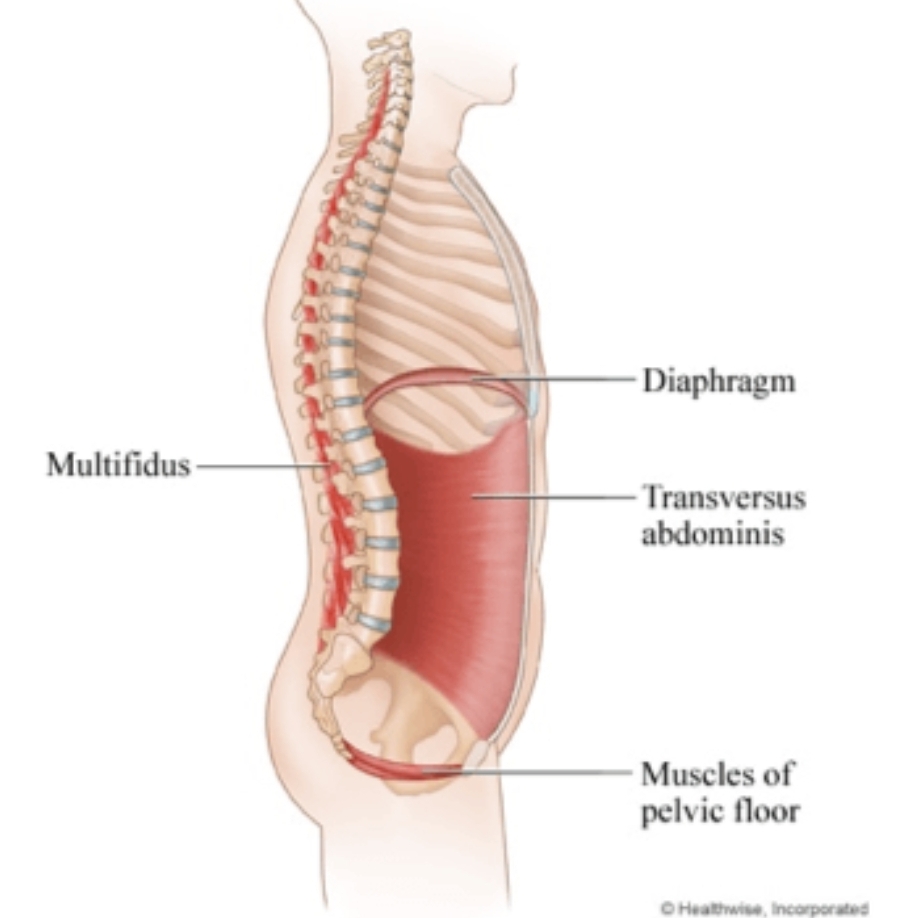I love the challenge of treating Low back Pain because so many factors come into play. Pain may be due to conditions such as sprain/strain, muscle tightness or muscle weakness, scoliosis, poor alignment, herniated discs, joint degeneration, nerve impingement, arthritis, cancer or pain referral from organs like kidneys, uterus and ovaries, liver, or gallbladder.
Pelvic Floor dysfunction is one of the most overlooked causes of Back Pain. Poor movement and strength of these muscles can affect bowel and bladder function (like incontinence or constipation), sexual pleasure, core strength and athletic performance. Dysfunction of these muscles can also refer pain to the low back, hips, groin, abdomen and genital area
The pelvic floor (PF) is part of our core Core which consists of the Diaphragm at the top, Deep Abdominals in front, Deep Back muscles in the back, and PF on the bottom. PF holds everything Up!! It is a group of muscles and ligaments that support our reproductive organs, bladder, and bowels. The Diaphragm works in synergy with the Pelvic Floor – when it contracts, the PF lengthens and when it relaxes, PF contracts
Most of the time, Back Pain is related to tight or overactive PF muscles. There is a misconception that just doing Kegels will fix everything, especially after having a baby or if the person has incontinence. However, doing a kegel may cause symptom aggravation if the pelvic floor muscles are already tight! In these cases, we need to calm the nervous system and relax the muscles
Here’s an example of Kegels not helping: I was working with a lady for back pain from a car accident and I asked her about her bladder health as part of my screening process. She admitted she had issues getting to the bathroom on time and when she tries to “squeeze it”, or contract her Pelvic Floor, it made her symptoms worse. So her muscles were overactive (super tight) and working against her. I worked with her on relaxation techniques, deep breathing exercises and gave her specific stretching to do; after a few visits she had no issues making it to the restroom in time – no more accidents. YAY
Diaphragmatic breathing, proper rib expansion and spinal mobility are important for pelvic health
- Place hands on ribs, take a deep breath and feel which way your rib cage expands. Does it move forward or laterally? Does one side move more than the other? Does it move at ALL???
- Place one hand on belly, one on chest, expand belly as you Inhale – chest should not move much, diaphragm is contracting. Now Exhale, diaphragm is lengthening
- Now pay attention to what your PF is doing as you are breathing. You should be able to feel it relax when you inhale – if you cannot feel anything happening down there, you may benefit from a Pelvic Floor assessment

